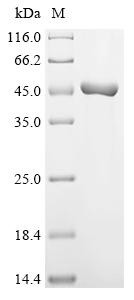Cookie-Einstellungen
Diese Website benutzt Cookies, die für den technischen Betrieb der Website erforderlich sind und stets gesetzt werden. Andere Cookies, die den Komfort bei Benutzung dieser Website erhöhen, der Direktwerbung dienen oder die Interaktion mit anderen Websites und sozialen Netzwerken vereinfachen sollen, werden nur mit Ihrer Zustimmung gesetzt.
Konfiguration
Technisch erforderlich
Diese Cookies sind für die Grundfunktionen des Shops notwendig.
"Alle Cookies ablehnen" Cookie
"Alle Cookies annehmen" Cookie
Ausgewählter Shop
CSRF-Token
Cookie-Einstellungen
FACT-Finder Tracking
Individuelle Preise
Kundenspezifisches Caching
Session
Währungswechsel
Komfortfunktionen
Diese Cookies werden genutzt um das Einkaufserlebnis noch ansprechender zu gestalten, beispielsweise für die Wiedererkennung des Besuchers.
Facebook-Seite in der rechten Blog - Sidebar anzeigen
Merkzettel
Statistik & Tracking
Endgeräteerkennung
Kauf- und Surfverhalten mit Google Tag Manager
Partnerprogramm

Bei Fragen nutzen Sie gerne unser Kontaktformular.
Bestellen Sie auch per E-Mail: info@biomol.com
Größere Menge gewünscht? Bulk-Anfrage
Bestellen Sie auch per E-Mail: info@biomol.com
Größere Menge gewünscht? Bulk-Anfrage
Organism: Mus musculus (Mouse). Source: E.coli. Expression Region: 409-705aa. Protein Length:... mehr
Produktinformationen "NAD (+) hydrolase SARM1 (Sarm1), partial, mouse, recombinant"
Organism: Mus musculus (Mouse). Source: E.coli. Expression Region: 409-705aa. Protein Length: Partial. Tag Info: C-terminal 6xHis-tagged. Target Protein Sequence: VASWKEAEVQ TWLQQIGFSQ YCENFREQQV DGDLLLRLTD EELQTDLGMK SSITRKRFFR ELTELKTFAS YATCDRSNLA DWLGSLDPRF RQYTYGLVSC GLDRSLLHRV SEQQLLEDCG IRLGVHRTRI LSAAREMLHS PLPCTGGKLS GDTPDVFISY RRNSGSQLAS LLKVHLQLHG FSVFIDVEKL EAGKFEDKLI QSVIAARNFV LVLSAGALDK CMQDHDCKDW VHKEIVTALS CGKNIVPIID GFEWPEPQAL PEDMQAVLTF NGIKWSHEYQ EATIEKIIRF LQGRPSQ. Purity: Greater than 90% as determined by SDS-PAGE. Endotoxin: Not test. Biological Activity: n/a. Form: Liquid or Lyophilized powder. Buffer: If the delivery form is liquid, the default storage buffer is Tris/PBS-based buffer, 5%-50% glycerol. If the delivery form is lyophilized powder, the buffer before lyophilization is Tris/PBS-based buffer, 6% Trehalose, pH 8.0. Reconstitution: We recommend that this vial be briefly centrifuged prior to opening to bring the contents to the bottom. Please reconstitute protein in deionized sterile water to a concentration of 0.1-1.0 mg/mL.We recommend to add 5-50% of glycerol (final concentration) and aliquot for long-term storage at -20 °C/-80 °C. Our default final concentration of glycerol is 50%. Customers could use it as reference. Storage: The shelf life is related to many factors, storage state, buffer ingredients, storage temperature and the stability of the protein itself. Generally, the shelf life of liquid form is 6 months at -20 °C/-80 °C. The shelf life of lyophilized form is 12 months at -20 °C/-80 °C. Notes: Repeated freezing and thawing is not recommended. Store working aliquots at 4 °C for up to one week. Relevance: NAD(+) hydrolase, which plays a key role in axonal degeneration following injury by regulating NAD(+) metabolism. Acts as a negative regulator of MYD88- and TRIF-dependent toll-like receptor signaling pathway by promoting Wallerian degeneration, an injury-induced form of programmed subcellular death which involves degeneration of an axon distal to the injury site. Wallerian degeneration is triggered by NAD(+) depletion: in response to injury, SARM1 is activated and catalyzes cleavage of NAD(+) into ADP-D-ribose (ADPR), cyclic ADPR (cADPR) and nicotinamide, NAD(+) cleavage promoting cytoskeletal degradation and axon destruction. Also able to hydrolyze NADP(+), but not other NAD(+)-related molecules. Can activate neuronal cell death in response to stress. Regulates dendritic arborization through the MAPK4-JNK pathway. Involved in innate immune response: inhibits both TICAM1/TRIF- and MYD88-dependent activation of JUN/AP-1, TRIF-dependent activation of NF-kappa-B and IRF3, and the phosphorylation of MAPK14/p38. Reference: "Prediction of the coding sequences of mouse homologues of KIAA gene: IV. The complete nucleotide sequences of 500 mouse KIAA-homologous cDNAs identified by screening of terminal sequences of cDNA clones randomly sampled from size-fractionated libraries." Okazaki N., Kikuno R., Ohara R., Inamoto S., Koseki H., Hiraoka S., Saga Y., Seino S., Nishimura M., Kaisho T., Hoshino K., Kitamura H., Nagase T., Ohara O., Koga H. DNA Res. 11:205-218(2004). Function: nan
| Schlagworte: | NADase SARM1, NAD(+) hydrolase SARM1, NADP(+) hydrolase SARM1, Sterile alpha and TIR motif-containing protein 1, Recombinant Mouse NAD (+) hydrolase SARM1 (Sarm1), partial |
| Hersteller: | Cusabio |
| Hersteller-Nr: | EP747471MO |
Eigenschaften
| Anwendung: | Activity not tested |
| Konjugat: | No |
| Wirt: | E.coli |
| Spezies-Reaktivität: | mouse |
| MW: | 40.7 kD |
| Reinheit: | >90% (SDS-PAGE) |
Datenbank Information
| UniProt ID : | Q6PDS3 | Passende Produkte |
| Gene ID : | GeneID 237868 | Passende Produkte |
Handhabung & Sicherheit
| Lagerung: | -20°C |
| Versand: | +4°C (International: +4°C) |
Achtung
Nur für Forschungszwecke und Laboruntersuchungen: Nicht für die Anwendung im oder am Menschen!
Nur für Forschungszwecke und Laboruntersuchungen: Nicht für die Anwendung im oder am Menschen!
Hier kriegen Sie ein Zertifikat
Loggen Sie sich ein oder registrieren Sie sich, um Analysenzertifikate anzufordern.
Bewertungen lesen, schreiben und diskutieren... mehr
Kundenbewertungen für "NAD (+) hydrolase SARM1 (Sarm1), partial, mouse, recombinant"
Bewertung schreiben
Loggen Sie sich ein oder registrieren Sie sich, um eine Produktbewertung abzugeben.
Zuletzt angesehen

